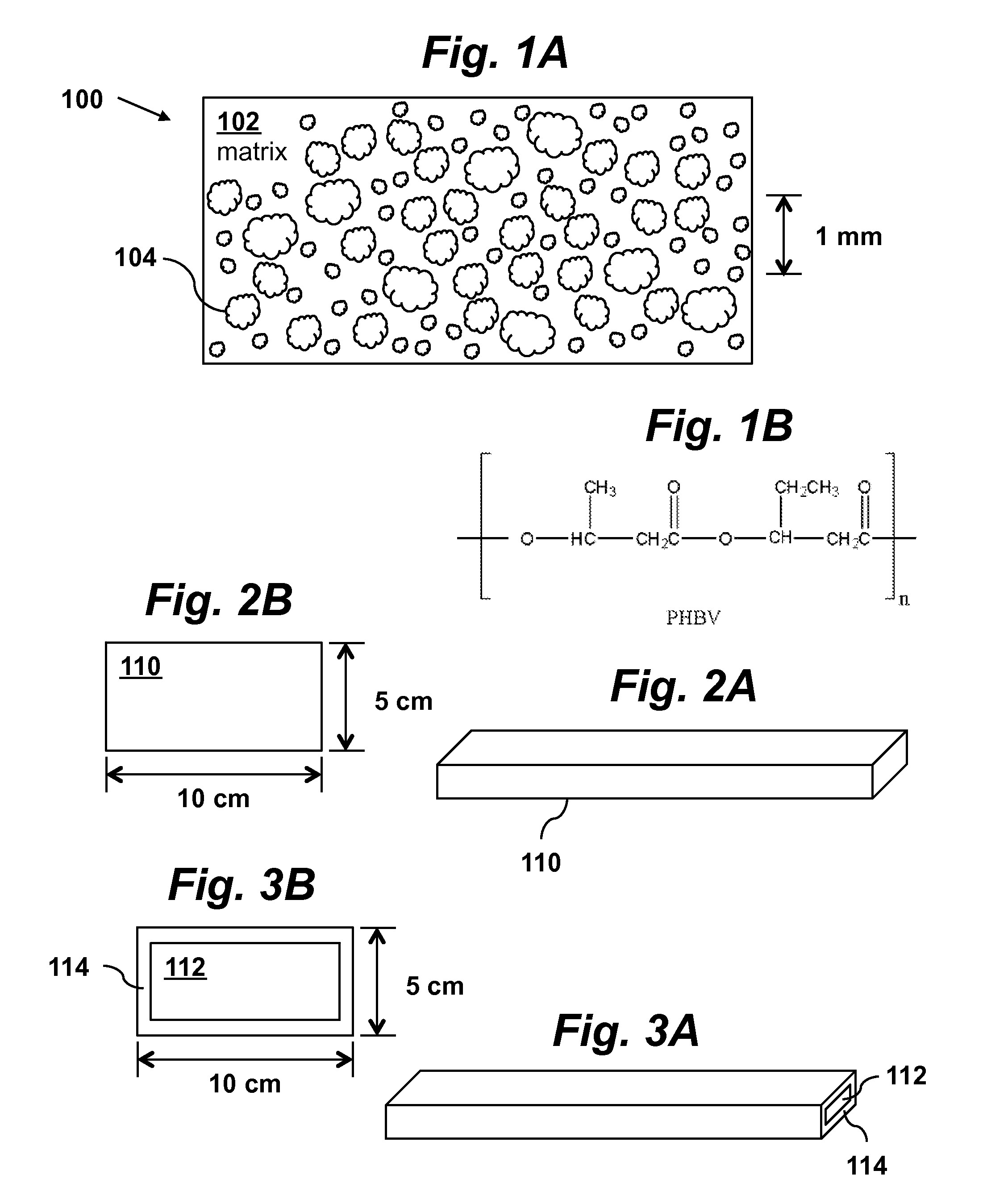PHBV/Ground Bone Meal and Pumice Powder Engineered Biobased Composite Materials for Construction
a biobased composite material and ground bone meal technology, applied in the direction of dyeing process, coating, transportation and packaging, etc., can solve the problems of unsolved discovery of such a suitable composite material, high manufacturing cost, and general lack of durability
- Summary
- Abstract
- Description
- Claims
- Application Information
AI Technical Summary
Benefits of technology
Problems solved by technology
Method used
Image
Examples
Embodiment Construction
[0012]Throughout the present description and claims, the following terminology will be used.
[0013]A naturally-derived material is defined to be a material that may be prepared from biological or geological natural resource materials solely by mechanical processing (e.g., grinding or pressing) that involves no chemical, additive, or substance other than potable water and / or processing for purposes of separation, isolation, or purification.
[0014]A biodegradable material is defined to be a material that experiences chemical dissolution through the action of microorganisms in less than ten years, or more preferably, less than one year.
[0015]A microporous material is defined as a material containing pores with diameters less than 2 nm.
[0016]The hygroscopic expansion of a material is defined as the fractional amount of linear expansion the material experiences as a result of its being saturated by moisture from its environment.
[0017]Conventional plastic composites often use filler materia...
PUM
| Property | Measurement | Unit |
|---|---|---|
| diameters | aaaaa | aaaaa |
| diameters | aaaaa | aaaaa |
| thickness | aaaaa | aaaaa |
Abstract
Description
Claims
Application Information
 Login to View More
Login to View More - R&D
- Intellectual Property
- Life Sciences
- Materials
- Tech Scout
- Unparalleled Data Quality
- Higher Quality Content
- 60% Fewer Hallucinations
Browse by: Latest US Patents, China's latest patents, Technical Efficacy Thesaurus, Application Domain, Technology Topic, Popular Technical Reports.
© 2025 PatSnap. All rights reserved.Legal|Privacy policy|Modern Slavery Act Transparency Statement|Sitemap|About US| Contact US: help@patsnap.com


